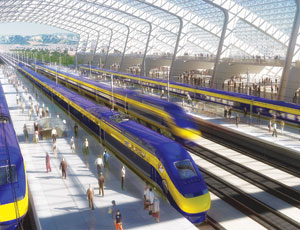High-speed-rail builders from Europe and Japan trekked to Washington, D.C., Chicago and Los Angeles in early February to share their experiences with Americans. Public-private partnerships, interoperability with other systems and public outreach were among the topics broached by French, German, Italian, Spanish and Japanese rail officials.

State engineers and their consultants are rolling up their sleeves after a Jan. 28 award of grants from the $8-billion pot for high-speed rail. In the Los Angeles symposium, held on Feb. 11-13, American Public Transportation Association President Bill Millar noted the U.S. already has an extensive freight system into which many of the “higher-speed” lines must be integrated. Methods from other nations “will have to be Americanized and adjusted to work in our country,” he said. APTA co-sponsored the events with the International Union of Railways, based in Paris.
Officials compared the high-speed-rail program to the Interstate highway system. Joe Szabo, Federal Railroad Administration chief, told attendees to be prepared for a “decades-long build-out.” He said an official national rail plan will be completed by September. “It will be a clearly articulated vision,” he said. “Ultimately, however, these will be state- and [region-] driven projects.”
The main goal of high-speed-rail systems is an alternative to short-haul flights. The revenue “sweet spot” is a trip lasting no longer than two to three hours, many international experts said. Other considerations include electricity needs, noise and train-created wind-force buffers and slab-versus-ballast track options.


Post a comment to this article
Report Abusive Comment